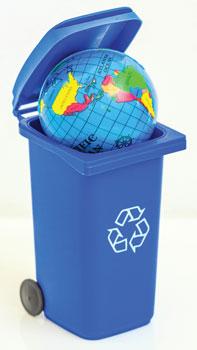 As Americans formulate our resolutions for fastapproaching 2018, Nielsen, the TV ratings folks, tells us that fully 69 percent of our resolutions involve staying fit and healthy and losing weight. Less important to us, apparently, are living life to the fullest, spending less and saving more and spending more time with those we love, though all are worthy goals.
As Americans formulate our resolutions for fastapproaching 2018, Nielsen, the TV ratings folks, tells us that fully 69 percent of our resolutions involve staying fit and healthy and losing weight. Less important to us, apparently, are living life to the fullest, spending less and saving more and spending more time with those we love, though all are worthy goals.
Not as prominent in the listings but an issue many of us ponder and worry about is our environment. Virtually everyone wants to be a good steward. We recycle at least some of the time. We worry about fossil fuel consumption and toy with the notion of hybrid vehicles. Increasingly, we are trying to eat and shop locally for all sorts of good reasons – our health, our local economy, the high cost of long-haul transportation and uncertainty about safe growing and manufacturing practices in faraway places.
But it is all complicated, even for those with the best intentions.
Is it environmentally better to have a live Christmas tree, as the Dicksons and millions of other American families do, or is an artificial tree the better environmental choice? Both options have costs. Trees, including those grown on farms in North Carolina, use land and water and require chemicals and human labor. Artificial trees are made, often in Asian factories, of plastic, aluminum and steel and are shipped to us in various packaging. Although some communities, including ours, make provisions to compost live trees after the holiday season, both live and artificial trees do wind up in landfills. Nielsen says that only 19 percent of Americans do like the Dicksons and buy a live tree, while 81 percent opt for artificial. So, which is environmentally better? It depends, but at least one consultant suggests artificial, as most families use the same tree year after year, giving it a lifespan of up to decades.
And how about shopping? Local boosters across America would love everyone to spend their holiday dollars with local businesses, but that takes time and gas and often stresses both shoppers and retail workers. The reality is that Americans are opting more and more often to shop online from the convenience of our homes. The pluses are that we can shop in our PJs and the goods come right to our doors, sometimes already wrapped in holiday papers and bows and ready to go under the tree, be it live or artificial. The negatives are that the money leaves our communities and goes whoknows- where and that after all the unwrapping is done, we still must contend with the environmental ravages of all that packaging. Planet Aid says that tiny, landlocked Austria recycles 62 percent of its waste, while the United States recycles slightly more than half of Austria’s waste – 34 percent. We should be ashamed.
Focus is on the holidays now, but truth be told, doing the environmentally correct thing is never easy or clear. Do we buy out-of-season fruits and vegetables all year-round in grocery stores, knowing they have traveled thousands of miles and used tons of fossil fuels to get to us? Do we buy commercially raised products, animal proteins, coffee and many other products, knowing that large multinational corporations are profiting at the expense of small farmers? Novelist Barbara Kingsolver and her family tried to eat exclusively local for a year, an adventure they document in Animal, Vegetable, Miracle. Suffice it to say, the family tried very hard but did not always succeed and wore themselves out in the process, as growing and preparing your own food without any processed ingredients takes considerable time.
Environmental questions are endless. Raising chickens has become a popular urban activity, and many people enjoy those homegrown, fresh eggs, even if they foreswear eating the chickens. But chickens make messes, which raise environmental issues. Weeding our gardens takes time and physical effort, but herbicides do the job quickly. Scarecrows are picturesque and may bother birds, but pesticides kill effectively. Both leave chemical residue.
And so on and so on and so on.
Our resolution should be to keep trying to find out what works both for us and for our environment.
Wishing you and those you love a happy and healthy 2018 and many successful resolutions.

 How to resolve AdBlock issue?
How to resolve AdBlock issue? 








